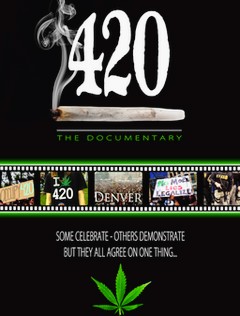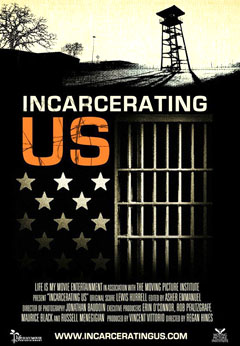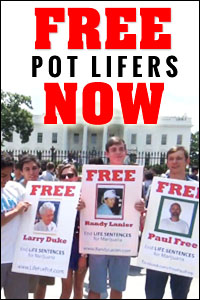Each Circuit in the nation provides pattern jury instructions for every conceivable charge a defendant can be indicted for. The following is taken from federalevidence.com for the 9th Circuit (page 411) with regard to what is necessary to prove a drug conspiracy case.
“[W]hen Congress made it a crime to ‘knowingly. . .possess with intent to manufacture, distribute, or dispense, a controlled substance. . . , it meant to punish not only those who know they possess a controlled substance, but also those who don’t know because they don’t want to know.” United States v. Heredia, 483 F.3d 913, 918 (9th Cir.) (en banc), cert. denied, 552 U.S. 1077 (2007). See also Instruction 5.7 (Deliberate Ignorance).
9.19 CONTROLLED SUBSTANCE— CONSPIRACY TO DISTRIBUTE OR MANUFACTURE (21 U.S.C. §§ 841(a) and 846)
The defendant is charged in [Count _____ of] the indictment with conspiracy to [[distribute] [manufacture]] [specify controlled substance] in violation of Section 841(a) and Section 846 of Title 21 of the United States Code. In order for the defendant to be found guilty of that charge, the government must prove each of the following elements beyond a reasonable doubt:
First, beginning on or about [date] and ending on or about [date], there was an agreement between two or more persons to [[distribute] [manufacture]] [specify controlled substance].
Second, the defendant knew the agreement had an unlawful object or purpose; and
Third, the defendant joined in the agreement with the intent to further its unlawful object or purpose.
[“To distribute” means to deliver or transfer possession of [specify controlled substance] to another person, with or without any financial interest in that transaction.]
A conspiracy is a kind of criminal partnership—an agreement of two or more persons to commit one or more crimes. The crime of conspiracy is the agreement to do something unlawful; it does not matter whether the crime agreed upon was committed.
For a conspiracy to have existed, it is not necessary that the conspirators made a formal agreement or that they agreed on every detail of the conspiracy. It is not enough, however, that they simply met, discussed matters of common interest, acted in similar ways, or perhaps helped one another. You must find that there was a plan to commit at least one of the crimes alleged in the indictment as an object or purpose of the conspiracy with all of you agreeing as to the particular crime which the conspirators agreed to commit.
One becomes a member of a conspiracy by willfully participating in the unlawful plan with the intent to advance or further some object or purpose of the conspiracy, even though the person does not have full knowledge of all the details of the conspiracy. Furthermore, one who willfully joins an existing conspiracy is as responsible for it as the originators. On the other hand, one who has no knowledge of a conspiracy, but happens to act in a way which furthers some object or purpose of the conspiracy, does not thereby become a conspirator. Similarly, a person does not become a conspirator merely by associating with one or more persons who are conspirators, nor merely by knowing that a conspiracy exists.
Comment
This instruction is for use with Instructions 9.15, 9.16, 9.18, 9.21, 9.23, and 9.25. 411
See United States v. Esquivel-Ortega, 484 F.3d 1221, 1228 (9th Cir.2007); United States v. Decoud, 456 F.3d 996, 1014 (9th Cir.2006), cert. denied, 551 U.S. 1116 (2007).
See United States v. Shabani, 513 U.S. 10, 15-16 (1994), holding that in order to establish a violation of 21 U.S.C. § 846, the government is not required to prove commission of overt acts in furtherance of the conspiracy. The Court contrasted § 846, which is silent as to whether there must be an overt act, with the general conspiracy statute, 18 U.S.C. § 371, which contains the explicit requirement that a conspirator “do any act to effect the object of the conspiracy.” Id. at 14.
412
9.20 CONTROLLED SUBSTANCE— ATTEMPTED DISTRIBUTION OR MANUFACTURE (21 U.S.C. §§ 841(a)(1) and 846)
The defendant is charged in [Count _______ of] the indictment with attempted [distribution] [manufacture] of [specify controlled substance] in violation of Sections 841(a)(1) and 846 of Title 21 of the United States Code. In order for the defendant to be found guilty of that charge, the government must prove each of the following elements beyond a reasonable doubt:
First, the defendant intended to [[distribute [specify controlled substance] to another person]] [[manufacture [specify controlled substance]];
Second, the defendant knew that it was [specify controlled substance] or some other prohibited drug; and
Third, the defendant did something that was a substantial step toward committing the crime.
Mere preparation is not a substantial step toward the commission of the crime of [distribution] [manufacture] of [specify controlled substance]. To constitute a substantial step, a defendant’s act or actions must demonstrate that the crime will take place unless interrupted by independent circumstances
[“To distribute” means to deliver or transfer possession of [specify controlled substance] to another person, with or without any financial interest in that transaction.]
Comment
See Comment to Instructions 9.15 (Controlled Substance—Possession with Intent to Distribute), 9.16 (Determining Amount of Controlled Substance) and 9.18 (Controlled Substance—Distribution or Manufacture).
Jurors do not need to agree unanimously as to which particular act or actions constituted a substantial step toward the commission of a crime. United States v. Hofus, 598 F.3d 1171, 1176 (9th Cir.2010).
To get an idea of what a drug conspiracy case looks like, here is an conspiracy indictment in this document. Note it is the United States of American V (16 individuals) because conspiracy requires an indictment of more than one individual, hence people are indicted in a group. Then, the first to cut a “plea bargain” typically get the best “deal” or sentence reduction by providing “substantial assistance.” Please note in the indictment, that the obvious ring leaders are Charles Fredrick Pofahl and Morris Key. The indictment does not provide any details of Amy Pofahl’s involvement in the two counts of “conspiracy” yet she (and others) are charged for conspiracy, because anyone who commits even one overt act, or appears to have “knowledge” can be indicted for conspiracy, whether they sold, distributed, or imported the drug. People can be found guilty of “conspiracy” to possess, distribute, manufacture, or import, even if they never possessed, distributed, manufactured or imported, because guilt attaches to the word “conspiracy” meaning a defendant is guilty of merely conspiring with those who did posses, distribute, manufacture or import. You will note that all the details provided in the indictment regarding the conspiracy counts pertain to Charles Pofahl and Morris Key. The only details provided against Amy Pofahl are under the Money Laundering Count, because Amy admittedly collected funds at her then-husband, Charles Pofahl’s request, after his arrest. In doing so, Amy ensnared herself in the conspiracy statute that held her responsible for all the drugs that everyone else sold, distributed, manufactured and imported.
In the Court’s charge to the jury, as with all conspiracy jury instructions, it was explained that :














